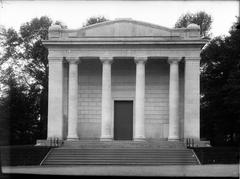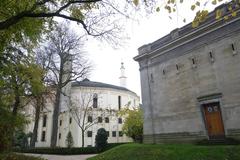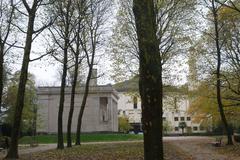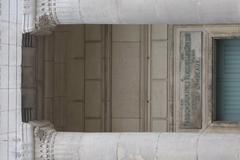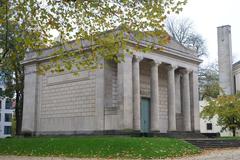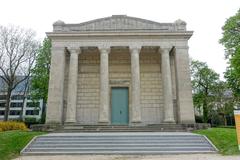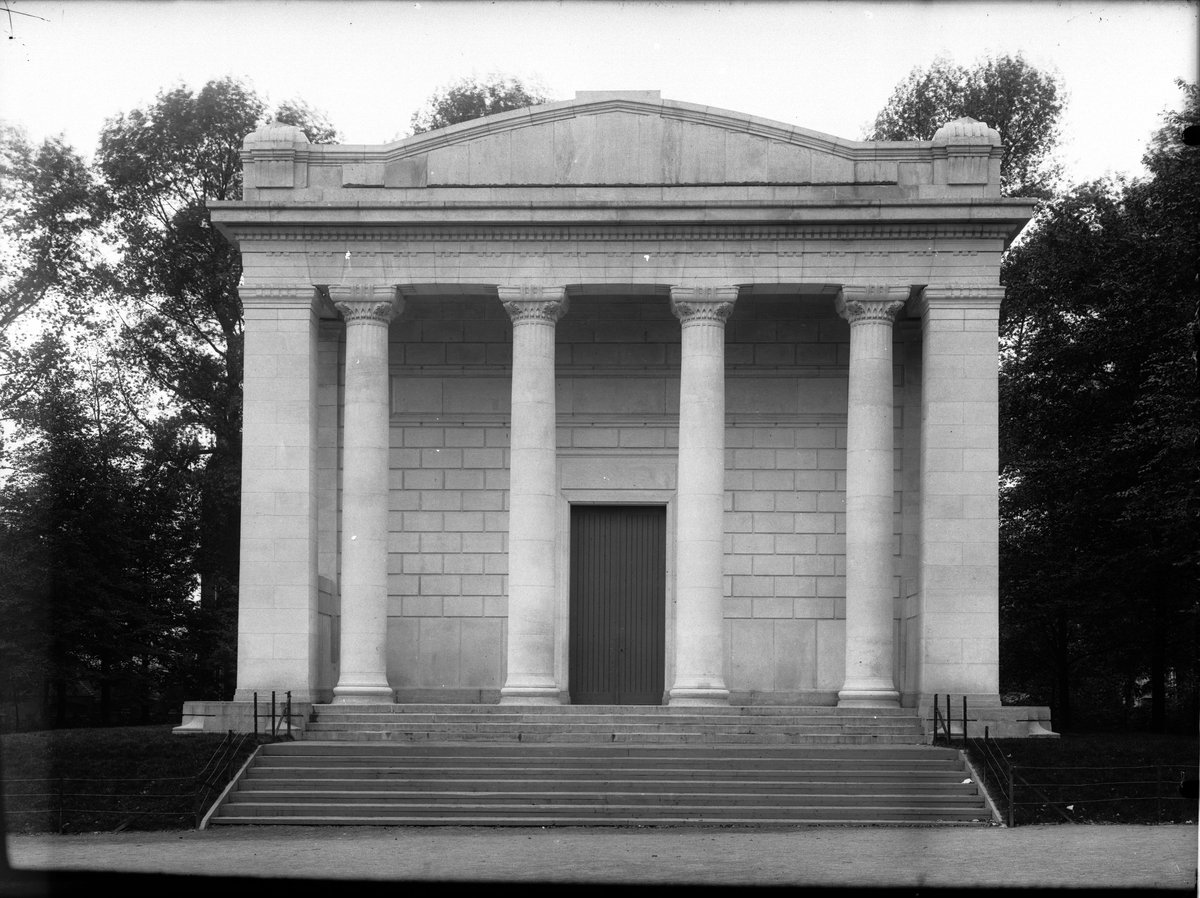
Visiting the Pavilion of Human Passions in Brussels: The Complete Guide
Date: 15/06/2025
Introduction
Nestled within the verdant Parc du Cinquantenaire, the Pavilion of Human Passions is one of Brussels’ most captivating cultural and architectural landmarks. This unique structure, designed by Art Nouveau pioneer Victor Horta in 1896, was built to house Jef Lambeaux’s monumental marble relief “The Human Passions.” The pavilion stands as a testament to Belgium’s fin de siècle creativity, blending neoclassical elements with early Art Nouveau sensibilities and reflecting the era’s artistic and social tensions.
This guide provides essential information for planning your visit: historical context, architectural highlights, practical visitor details, ticketing, accessibility, travel tips, and recommendations for nearby attractions. Whether you are an art lover, architecture enthusiast, or cultural traveler, the Pavilion of Human Passions offers an immersive experience in the heart of Brussels (planergo.com; HelloTravel).
Historical Background
Origins and Commissioning
Commissioned in 1889 and funded by King Leopold II, the Pavilion of Human Passions was conceived to enshrine Lambeaux’s ambitious bas-relief, which vividly depicts a spectrum of human emotions—love, violence, war, death, and ecstasy. The project reflected the period’s fascination with allegorical art and Belgium’s burgeoning artistic identity.
Architectural Vision
Victor Horta’s design marks his first public commission and anticipates his later Art Nouveau masterpieces. The pavilion recalls a Greek temple with its colonnaded façade and symmetrical plan, yet departs from strict classicism through subtle curves and organic forms that hint at nature’s dynamism. Originally, Horta intended the relief to be illuminated by natural light via an open portico, but disputes with Lambeaux and public controversy led to the addition of a gallery wall and bronze doors, partially enclosing the sculpture (planergo.com).
Artistic Collaboration and Controversy
The collaboration between Horta and Lambeaux was fraught with creative tension. Lambeaux favored a more contemplative, enclosed display for his work, while Horta advocated for openness and public engagement. The relief’s explicit depictions of human passion and suffering generated heated debate, with critics divided over its meaning, morality, and artistic merit. The pavilion itself was often closed to the public, adding an aura of mystery.
Restoration and Modern Significance
Neglected for decades, the pavilion underwent major restoration from 2013 to 2015 and again in 2019, preserving both Horta’s architecture and Lambeaux’s relief. Today, the site symbolizes the intersection of art, architecture, and social discourse, and plays a vital role in Brussels’ cultural life, especially during festivals and heritage events (artandhistory.museum).
The Pavilion’s Artistic and Architectural Highlights
Jef Lambeaux’s “The Human Passions”
Measuring approximately 12 meters wide and 8 meters high, “The Human Passions” (French: Les Passions humaines) is a swirling, dramatic array of nude figures carved from Carrara marble. The relief explores extremes of human experience—happiness, sin, violence, and death—rendered with anatomical precision and emotional intensity. Its boldness shocked late 19th-century audiences, cementing its place as a masterpiece of Belgian sculpture (visit.brussels).
Interplay Between Architecture and Sculpture
Horta’s pavilion was designed to enhance the relief’s impact. The building’s proportions, lighting, and forms interact harmoniously with the sculpture, creating a “total work of art” (Gesamtkunstwerk). Even after the enclosure, carefully directed natural light from above accentuates the marble’s texture, heightening the emotional effect (artandhistory.museum).
Practical Visitor Information
Visiting Hours
As of June 2025, the Pavilion of Human Passions is temporarily closed for maintenance. Normally, it is accessible only during specific periods—mainly in the summer months or on select Sundays, often exclusively through guided tours due to preservation concerns. For the latest schedule, always check the Art & History Museum website or Visit Brussels portal.
Tickets and Booking
- Entry: Usually free, but strictly limited to small groups during guided tours.
- Booking: Advance booking is essential. Tours can be reserved through the Art & History Museum, special festival websites, or Brussels Heritage Days.
- Special Events: During cultural events (e.g., Bright Festival), the pavilion may host light installations or performances, sometimes with extended hours and special ticketing (Bright Festival website).
Accessibility
- Physical Access: The pavilion entrance is step-free and accessible via park pathways. The interior is compact, so wheelchair maneuverability may be limited during crowded periods.
- Support: Assistance dogs are permitted. For additional support or accessibility concerns, contact the venue in advance.
Getting There
- Public Transport: Metro lines 1 and 5 (Merode station) and several bus/tram lines serve the park.
- Bicycle: Bike-sharing stations (Villo!) are located at park entrances.
- Car: Limited street parking is available; public transport is recommended due to congestion.
Visitor Tips
- Arrive Early: Due to short opening windows and visitor caps, plan to arrive 15–20 minutes before opening.
- Check for Updates: Opening hours may change due to maintenance or events; always verify in advance.
- Combine with Nearby Attractions: Explore the Royal Museum of the Armed Forces, Autoworld, and the Art & History Museum, all within the Cinquantenaire Park.
- Facilities: No restrooms or cloakrooms in the pavilion; facilities are available elsewhere in the park.
Photography and Unique Photo Spots
Non-flash photography is permitted inside (subject to guide approval). The pavilion offers superb opportunities for capturing architectural details and the dramatic relief. Professional equipment may be restricted.
Cultural Integration and Public Reception
The Pavilion of Human Passions regularly features in major Brussels cultural events, such as the Bright Festival, where light installations and performances animate its façade. These occasions attract diverse audiences and media attention, showcasing the pavilion’s enduring relevance in the city’s cultural narrative. Educational programs and guided tours enrich the experience for schools, universities, and cultural organizations, fostering dialogue about art, history, and morality (visit.brussels).
Frequently Asked Questions (FAQ)
Q: What are the opening hours of the Pavilion of Human Passions?
A: The pavilion is usually open during summer or special events, and access is generally by guided tour only. As of June 2025, it is temporarily closed for maintenance.
Q: Is entry free?
A: Yes, entry is typically free, but advance booking is required due to limited capacity.
Q: Is the pavilion wheelchair accessible?
A: The entrance is step-free, but the interior is compact. Contact the venue for specific needs.
Q: Can I take photographs inside?
A: Non-flash photography is allowed; professional equipment may be restricted.
Q: Are guided tours available?
A: Yes, guided tours are the main means of access and provide valuable historical and artistic context.
Summary and Visitor Recommendations
The Pavilion of Human Passions is a hidden gem in Brussels, bringing together visionary architecture, provocative art, and a rich historical narrative. Despite its limited access, it offers a unique cultural experience for those who plan ahead. To maximize your visit:
- Book guided tours in advance via Art & History Museum or event websites.
- Check official sources for current opening hours and special events.
- Explore nearby museums and gardens within Parc du Cinquantenaire.
- Use digital resources (virtual tours, mobile apps) to enhance your experience.
Whether you seek artistic inspiration or a deeper understanding of Belgium’s cultural heritage, the Pavilion of Human Passions is a must-visit site that continues to intrigue, challenge, and inspire (planergo.com; visit.brussels).
Sources and Official Links
- Art & History Museum – Guided Tour: Pavilion of Human Passions
- Planergo – Temple of Human Passions
- HelloTravel – Temple of Human Passions
- Visit Brussels – Pavilion of Human Passions
Enhance your Brussels travel experience by downloading the Audiala app for audio guides, insider tips, and the latest updates on historical sites. Follow official museum and festival channels for news on special events, and explore our related articles on Brussels’ art and cultural heritage.
